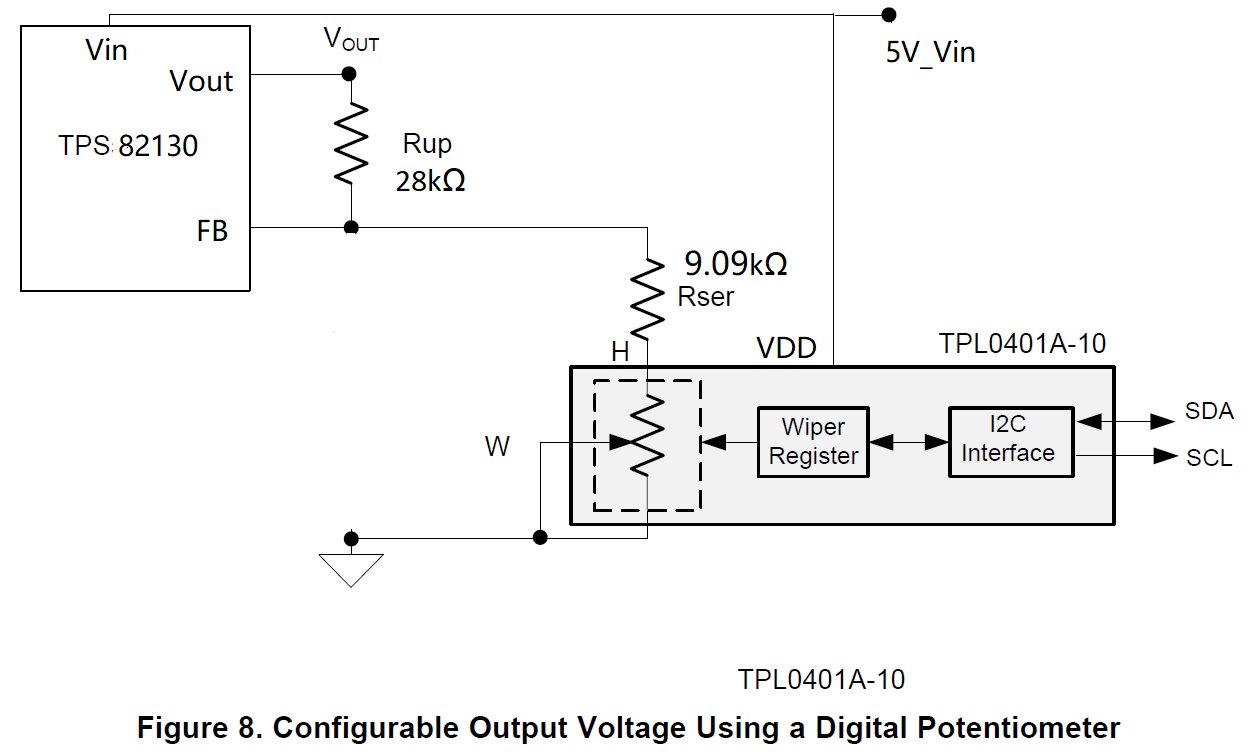Other Parts Discussed in Thread: TPS82130
TPL0401A Power Sequence as below:
Protection diodes limit the voltage compliance at SDA, SCL, terminal H, and terminal W, making it important to
power up VDD first before applying any voltage to SDA, SCL, terminal H, and terminal W. The diodes are forwardbiasing,
meaning VDD can be powered unintentionally if VDD is not powered first.
TPS82130 Vin and TPL0401A VDD use the same 5V power.
I have some concern with power down. If the 5V_Vin voltage discharge faster than Vout(5V_Vin is lower than Vout during power down) , will it cause a damage to TPL0401A?
If the 5V_Vin supply voltage goes to 0V eventually, will it cause a damage to TPL0401A? How can I protect TPL0401A in these situation?


